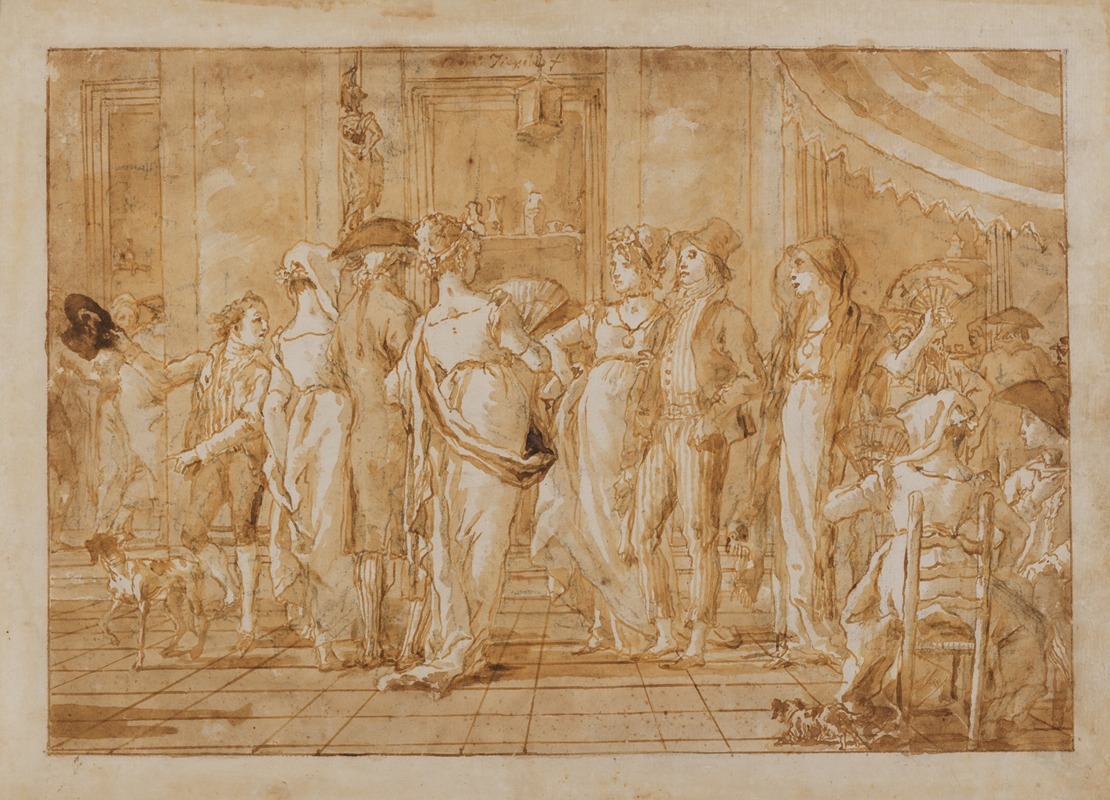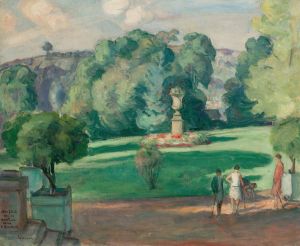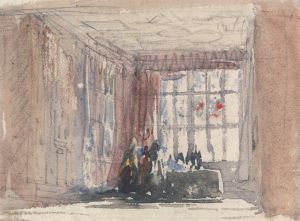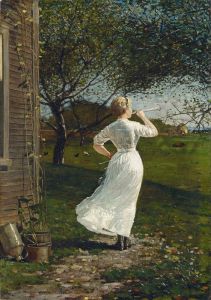
In Piazza
A hand-painted replica of Giovanni Domenico Tiepolo’s masterpiece In Piazza, meticulously crafted by professional artists to capture the true essence of the original. Each piece is created with museum-quality canvas and rare mineral pigments, carefully painted by experienced artists with delicate brushstrokes and rich, layered colors to perfectly recreate the texture of the original artwork. Unlike machine-printed reproductions, this hand-painted version brings the painting to life, infused with the artist’s emotions and skill in every stroke. Whether for personal collection or home decoration, it instantly elevates the artistic atmosphere of any space.
Giovanni Domenico Tiepolo, an Italian painter and printmaker, was a prominent figure in the 18th-century Venetian art scene. He was the son of the renowned artist Giovanni Battista Tiepolo and was known for his own distinctive style that combined elements of his father's influence with his unique artistic vision. One of his notable works is "In Piazza," a painting that reflects his mastery in capturing the vibrancy and dynamics of public spaces.
"In Piazza" is a testament to Giovanni Domenico Tiepolo's skill in depicting lively scenes filled with figures engaged in various activities. The painting showcases a bustling square, a common subject in Tiepolo's oeuvre, where he often explored the interactions and daily life of people in public settings. His ability to render such scenes with vivid detail and a sense of movement is a hallmark of his work.
The composition of "In Piazza" is characterized by its dynamic arrangement of figures, each engaged in different activities that contribute to the overall liveliness of the scene. Tiepolo's use of color and light enhances the vibrancy of the painting, drawing the viewer's eye across the canvas and inviting them to explore the multitude of interactions taking place. The figures are depicted with a sense of individuality, each contributing to the narrative of the scene.
Tiepolo's technique in "In Piazza" reflects his background in the Venetian tradition of painting, which emphasized color, light, and expressive brushwork. His ability to capture the essence of a bustling square with such clarity and energy is indicative of his skill as an observer of human nature and his talent in translating these observations into art.
The painting also demonstrates Tiepolo's interest in the theatricality of everyday life. The arrangement of figures and the interplay of light and shadow create a sense of drama and movement, akin to a stage performance. This theatrical quality is a recurring theme in Tiepolo's work, where he often blurred the lines between reality and performance, inviting viewers to engage with the scene on multiple levels.
"In Piazza" is not only a reflection of Tiepolo's artistic prowess but also a window into the social and cultural life of 18th-century Venice. The painting captures the essence of a public square as a hub of activity and interaction, a place where people from various walks of life converge. Through his depiction of this scene, Tiepolo offers a glimpse into the vibrancy and diversity of Venetian society during this period.
Giovanni Domenico Tiepolo's "In Piazza" remains an important work in the study of 18th-century Venetian art. It exemplifies his ability to blend observation with artistic expression, creating a scene that is both a realistic depiction of a public space and a dynamic composition that engages the viewer. The painting stands as a testament to Tiepolo's legacy as an artist who captured the spirit of his time with both skill and sensitivity.


















